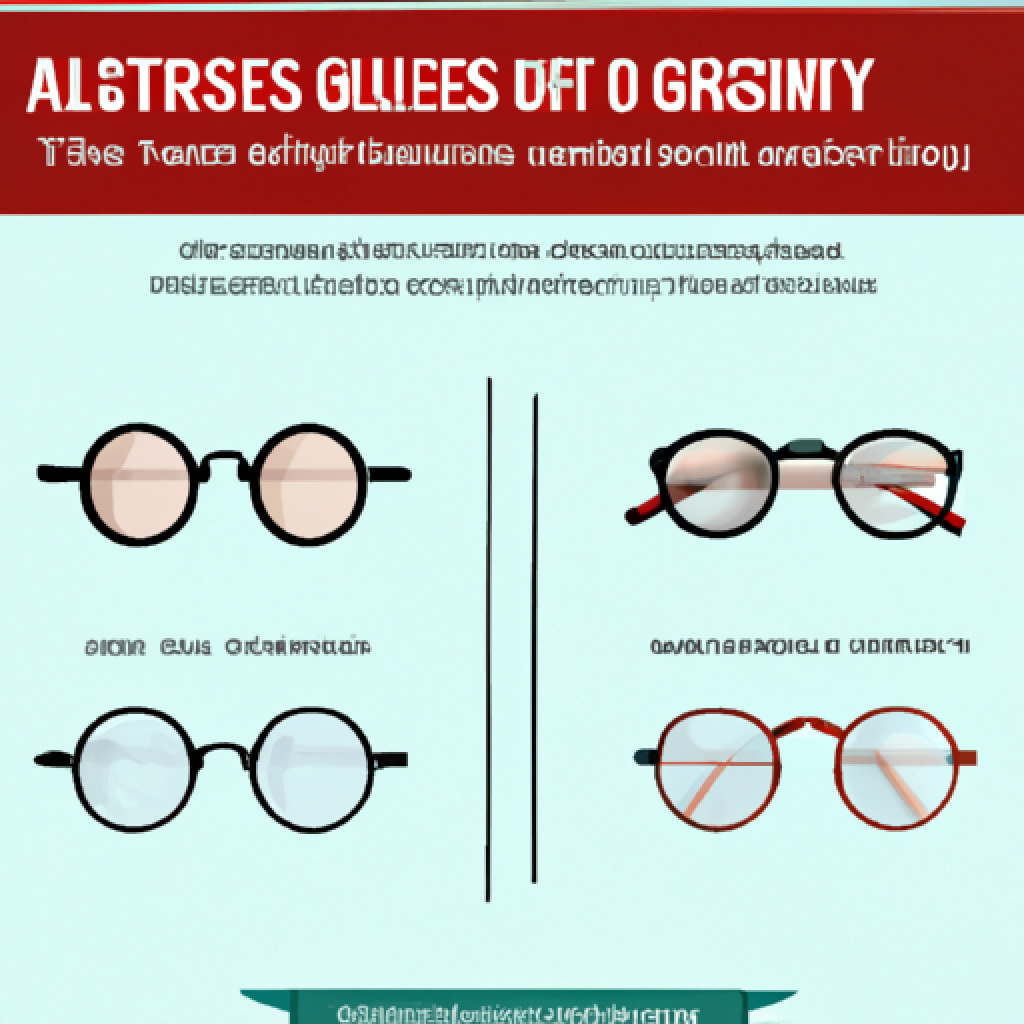What Is The Difference Between Anti-reflective And Anti-glare Glasses?

Ever wondered why some people wear glasses that seem to magically eliminate reflections and glare from their lenses? Well, I did too, which is why I decided to do some digging about the difference between anti-reflective and anti-glare glasses. As it turns out, these two terms are often used interchangeably, but there are some subtle distinctions that you might find interesting. So, buckle up and get ready to learn why these glasses are the secret weapon against annoying reflections and glaring lights.
Understanding the Basics of Eyewear Coatings
Eyewear coatings play a crucial role in enhancing our visual experience and protecting our eyes from various factors. Two commonly used coatings are anti-reflective and anti-glare coatings. These coatings are often heard together, and many people use the terms interchangeably. However, there are distinct differences between the two.
Definition of Anti-reflective Coating
Anti-reflective (AR) coating, also known as anti-reflection coating, is a thin layer applied to the surface of eyeglass lenses to reduce reflections and glare. It is designed to allow more light to pass through the lenses, improving the clarity and sharpness of vision.
Definition of Anti-glare Coating
On the other hand, anti-glare coating, also referred to as non-glare coating, is another type of coating used to minimize the amount of light reflected off the lenses. While it serves a similar purpose to anti-reflective coating by reducing glare, it is primarily designed to enhance visibility by reducing reflections from artificial light sources such as lamps and computer screens.
The Importance of Eyewear Coatings
Both anti-reflective and anti-glare coatings offer several benefits that make them highly valuable additions to eyewear. These coatings help improve visual acuity, reduce eye strain, enhance the aesthetic appearance of glasses, and provide protection against potentially harmful elements. Understanding the science and benefits of these coatings is key to making informed decisions when choosing the right eyewear.
The Science Behind Anti-reflective Coating
To fully appreciate the benefits of anti-reflective coating, it’s essential to delve into the science behind how it works, the materials used, and the manufacturing process.
How Anti-reflective Coating Works
Anti-reflective coating works by altering the behavior of light that hits the lens surface. Instead of bouncing off the surface and causing reflections, the coating allows light to pass through the lens by reducing surface reflections. This reduction in reflections not only improves vision clarity but also enhances the overall appearance of the lenses, as it eliminates distracting reflections on the lens surface.
Materials Used in Anti-reflective Coating
The key material used in anti-reflective coating is typically a transparent thin film composed of metal oxides or silicon dioxide. These materials are carefully applied to the lens surface using a deposition process, ensuring uniformity and durability of the coating.
The Manufacturing Process of Anti-reflective Coating
The manufacturing process of anti-reflective coating involves several steps to ensure optimal performance and longevity. First, the lens surface is thoroughly cleaned and prepared to remove any impurities. Next, the thin film materials are applied to the lens surface using a deposition technique such as physical vapor deposition or chemical vapor deposition. After the coating application, the lenses undergo a curing process to enhance the durability and adhesion of the coating. Finally, the lenses are inspected for quality control before being integrated into eyewear frames.

Benefits of Anti-reflective Glasses
Understanding the science behind anti-reflective coating helps to shed light on the numerous benefits of opting for anti-reflective glasses.
Improving Visual Acuity
One of the primary benefits of anti-reflective glasses is the improvement in visual acuity. By reducing reflections and optimizing light transmission through the lenses, anti-reflective coating enhances contrast sensitivity, allowing for better perception of fine details and improved overall vision sharpness.
Reducing Eye Strain
Constant exposure to bright lights, especially in environments with high artificial lighting, can cause significant eye strain. Anti-reflective glasses help minimize the strain by reducing the reflections that can cause discomfort and fatigue. This makes them particularly useful for individuals who spend long hours in front of digital screens.
Enhancing Aesthetic Appearance
In addition to the functional benefits, anti-reflective glasses also offer aesthetic advantages. The coating reduces the distracting reflections on the lens surface, making the glasses more attractive and allowing others to see your eyes clearly.
Possible Downsides of Anti-reflective Glasses
While anti-reflective glasses offer numerous advantages, it’s important to be aware of the potential downsides associated with this type of coating.
Cleaning Issues
Anti-reflective coating is more prone to showing smudges and fingerprints, which can be visible on the lens surface. Cleaning the lenses requires extra care to avoid damaging the coating. Specialized cleaning solutions and microfiber cloths are recommended to maintain the cleanliness and clarity of anti-reflective glasses.
Minor Scratches
Although modern anti-reflective coatings are more durable and scratch-resistant than before, they can still be susceptible to minor scratches with improper handling or cleaning. These scratches may not affect vision significantly, but they can decrease the cosmetic appearance of the lenses.
Potential Reflections
While anti-reflective coating reduces surface reflections, it does not eliminate reflections entirely. In certain lighting conditions, such as direct sunlight or very bright indoor lights, some reflections may still be visible. However, these reflections are typically minimal compared to those on non-coated lenses.

Who Can Benefit From Anti-reflective Glasses
Anti-reflective glasses can be beneficial for various individuals, especially those in specific situations or with particular visual needs.
Users of Digital Devices
People who spend significant amounts of time using digital devices, such as computers, tablets, and smartphones, can greatly benefit from anti-reflective glasses. The coating reduces the glare caused by the screens and enhances the visual clarity, reducing eye strain and fatigue.
Nighttime Drivers
Driving at night can be challenging due to the glare from headlights, streetlights, and other sources of artificial lighting. Anti-reflective glasses help minimize these reflections, allowing drivers to see more clearly and ensure safer night-time driving.
People With High Prescription Glasses
Individuals with high prescription glasses often face challenges related to reflections and distortions. Anti-reflective glasses can mitigate these issues by reducing reflections and enhancing visual acuity, providing a clearer and more comfortable experience for those with high prescription needs.
How to Maintain and Care for Anti-reflective Glasses
Proper maintenance and care are crucial for prolonging the lifespan of anti-reflective glasses and maximizing their benefits.
Cleaning Instructions
To clean anti-reflective glasses, it’s essential to use a lens-cleaning solution specifically formulated for coated lenses. Avoid using harsh chemicals, solvents, or abrasive materials that can damage the coating. A soft microfiber cloth should be used, gently wiping the lenses in a circular motion to remove any smudges or dirt particles.
Protection from Scratches
Although anti-reflective coatings are relatively durable, considering protective measures against scratches is important. Invest in a sturdy eyewear case to store the glasses when they are not being worn. Additionally, avoid placing the glasses face-down on hard surfaces to minimize the risk of scratches.
Regular Check-ups
Regular visits to an optometrist are essential to ensure the efficiency and longevity of anti-reflective glasses. Eye examinations will help identify any potential issues or changes in vision that may require adjustments or new lenses.

The Science Behind Anti-glare Coating
While anti-glare coating is often referred to interchangeably with anti-reflective coating, there are subtle differences in terms of functionality and application.
How Anti-glare Coating Works
Anti-glare coating functions by reducing glare from artificial light sources, such as lamps, headlights, and computer screens. It aims to enhance overall visibility by minimizing the reflections that can obstruct clear vision. Unlike anti-reflective coating, which primarily reduces surface reflections, anti-glare coating specifically targets glare caused by external light sources.
Materials Used in Anti-glare Coating
Anti-glare coating uses a combination of different materials that interact with the light, helping to reduce the reflections. These materials often include silicon dioxide and hydrophobic elements that repel water and reduce smudging.
The Manufacturing Process of Anti-glare Coating
The production of anti-glare coating involves similar steps to those of anti-reflective coating. The lens surface is thoroughly cleaned, and the coating is applied using a specialized process such as dip coating or spin coating. This process ensures uniformity and optimal distribution of the coating on the lens surface.
Benefits of Anti-glare Glasses
Just like anti-reflective glasses, anti-glare glasses offer several benefits that make them highly desirable for certain individuals.
Reducing Glare
The primary benefit of anti-glare glasses is their ability to reduce glare originating from various light sources. This reduction in glare allows for clearer vision and minimizes eye strain, making them particularly beneficial for individuals who work in brightly lit environments or spend significant time outdoors.
Enhancing Visual Comfort
Anti-glare glasses enhance visual comfort by reducing the discomfort caused by glare. This becomes especially important when working on tasks that require intense concentration or extended periods of screen time. The reduced strain on the eyes allows for a more comfortable and productive experience.
Improving Peripheral Vision
Peripheral vision is essential for overall visual awareness, particularly during activities such as driving or playing sports. Anti-glare glasses help enhance peripheral vision by eliminating the glare that can hinder the ability to see objects or movements in the periphery, ensuring a safer and more enjoyable experience.

Possible Downsides of Anti-glare Glasses
While anti-glare glasses offer numerous advantages, it’s important to consider the potential downsides before making a decision.
Sensitivity to Scratches
Similar to anti-reflective glasses, anti-glare glasses can exhibit sensitivity to scratches. Although efforts are made to improve the scratch resistance, the anti-glare coating may still be susceptible to minor scratches, which can reduce the effectiveness of the coating and affect the visual clarity.
Cleaning Difficulties
Anti-glare glasses, just like their anti-reflective counterparts, require proper cleaning techniques and materials. The coating may be more prone to showing smudges and requires regular cleaning to maintain optimal performance. Following the recommended cleaning instructions and using specialized lens-cleaning solutions and soft microfiber cloths ensure proper preservation of the anti-glare coating.
Damage from UV Light
While some anti-glare coatings include built-in protection against ultraviolet (UV) light, it’s important to verify the level of UV protection provided. Prolonged exposure to UV rays can damage both the anti-glare coating and the eyes, so it is recommended to ensure the glasses offer adequate UV protection in addition to the anti-glare feature.
Are there any disadvantages to using anti-glare glasses with anti-reflective coating?
There are a few potential disadvantages of anti-reflective coating on anti-glare glasses. One downside is that the coating can be delicate and easily scratched, requiring extra care. Additionally, the coating can sometimes cause a slight decrease in overall visual acuity, especially in low-light conditions. Lastly, the coating may add an extra cost to the glasses.
Deciding Between Anti-reflective and Anti-glare Glasses
Choosing between anti-reflective and anti-glare glasses depends on personal needs and preferences. Here are some factors to consider when making a decision:
Identifying Personal Needs
Understanding the specific visual challenges or requirements is crucial in deciding which type of coating will be more beneficial. If reflections from lights and digital screens are the main concern, anti-reflective glasses may be the better choice. On the other hand, if glare from external light sources is the primary issue, anti-glare glasses may be the preferred option.
Discussing with an Optometrist
Consulting with an optometrist is invaluable to receive professional advice tailored to individual needs. They can evaluate the specific visual challenges, current glasses prescription, lifestyle habits, and preferences to recommend the most suitable coating option.
Weighing Costs against Benefits
Considering the budget is an essential aspect when choosing between the two coatings. Anti-reflective and anti-glare glasses may have different pricing, and understanding the costs associated with each option allows for a balanced decision based on the perceived benefits.
In conclusion, both anti-reflective and anti-glare glasses offer unique advantages that enhance visual comfort, clarity, and aesthetics. By understanding the differences, benefits, and potential downsides of these coatings, individuals can make informed decisions when choosing the most suitable eyewear based on their specific needs and preferences. Regular care and maintenance, along with routine visits to an optometrist, ensure that the chosen coating remains effective and provides optimal visual experiences for years to come.








